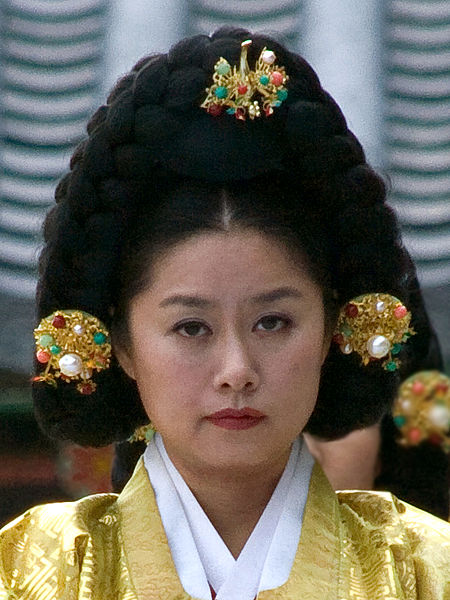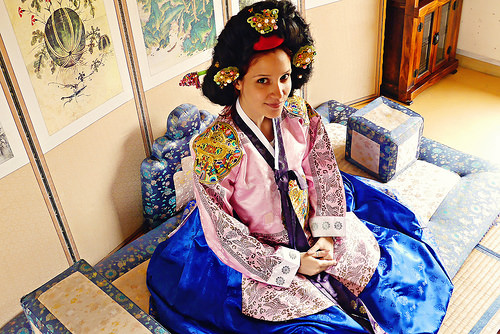T is for Tteoljam
(image creative commons via photopin)
T is for Tteoljam.
What is that, you ask? And no, it’s not an exotic fruit preserve for your morning toast.

Tteoljam is a specific type of hair pin worn by women in ancient Korea as well as by women in modern times when they don the traditional hanbok. This hair pin is embellished with stones, jewels, jade and metals. In ancient Korea you could generally tell a woman’s social status by the type of hair ornaments she possessed.
You can see the woman above is wearing a butterfly tteoljam. In Moonlight Dancer, I made use of a butterfly tteoljam both in the time-slip episodes and with a doll in the present day scenes to link the past with the present. In Korean culture, the butterfly symbolizes happiness and love.

(image Seoul Gyeongbokgung Chinjamrye via Wikimedia Commons)
My goodness, she doesn’t look very happy, does she? Perhaps her tteoljam jewels are weighing her down.
The Tteoljam is a beautiful piece of artistry, don’t you agree? I love all the jewelry of the Silla, Goguryeo, Goryeo, and Joseon dynasties.
You can see many stunning pieces of jewelry–tteoljam and earrings–when you watch historical Korean dramas (with subtitles). Some of my favorites are:
Dae Jang Geum. This is the very best historical drama I’ve seen. It’s based on the true story of a woman who rises through her indomitable spirit to become a famous scholar and doctor. Bonus: You’ll see fabulous earrings and tteolja
Jumong. This one takes place around 37 BCE and features star-crossed lovers and jealous brothers.
The Great Queen Seondeok. This drama details the ascension amid palace politics of the first woman monarch of the Silla dynasty. Yes, lots of beautiful tteoljam. Plus, I’m coveting all the earrings I saw on this show!

So, what do you think of these hair ornaments? Would you like to wear one? Or maybe just own one?

8 thoughts on “T is for Tteoljam”
I am learning so many interesting things with your alphabet posts. How about doing it again backwards or with the Spanish alphabet – there are more letters.
Oh, you are so kind–especially since I have absolutely no idea what I’m doing for U tomorrow! Does the Spanish alphabet have different letters? I didn’t know that.
Spanish has a, b, c, ch, d, e, f, g, h, i, j, k, l, ll, m, n, ñ, o, p, q, r, rr, s, t, u, v, w, x, y, z. I think they finally took the ch out as a separate dictionary entry so actually the only different letters are the double l, double r, and ñ (n with a tilde). Also there are no original Spanish words with a w, only foreign words that made it into their language.
For a shorter alphabet, how about Greek? Only 24 letters there. And Hebrew has even fewer: 22.
You are a linguist, I see. I do not know Spanish or Hebrew; I could make a really bad attempt at Korean maybe.
It’s a beautiful bit or adornment indeed.
Yes, and each one is unique. My favorite thing to put on every day is earrings, so I wouldn’t mind adding one of these as well.
I’m doubtful I would wear it, but I’m sure my daughters would.
Ah, yes, to be young again and have long, flowing locks just waiting for an updo and some tteoljam!